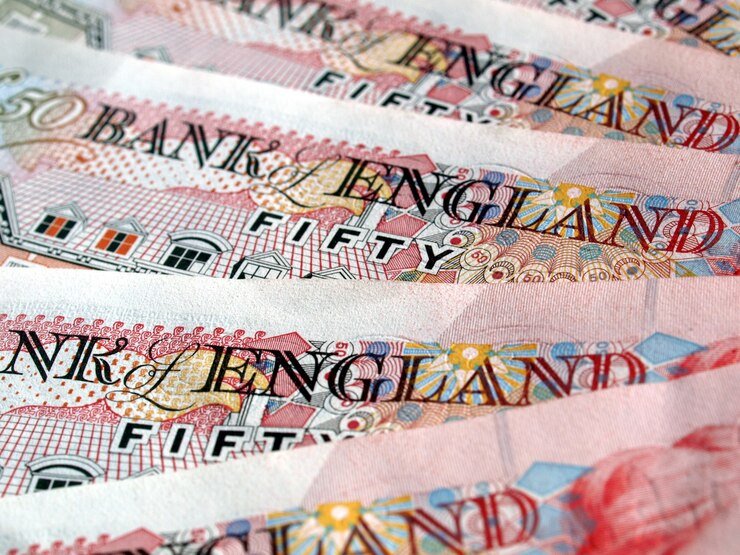GBP/USD Falls Before UK Labor Market Figures: Most Important Factors Contributing to the Market Decline
GBP/USD has fallen around 1.2600 before important UK labor market figures, ending its five-day streak of gains. Traders expect an increase in unemployment and claimant count, which may weigh on the British Pound. UK PM Keir Starmer’s demand for a “US backstop” in a Ukraine peace agreement also brings geopolitical uncertainty. On the American side, the Dollar rallies on increasing Treasury yields and dovish Fed comments, with policymakers reiterating that inflation threats remain. From a technical point of view, GBP/USD is approaching major support at 1.2600, with additional selling potential if numbers are disappointing. Investors are closely watching UK job data and Fed policy cues for the next move. KEY LOOKOUTS • UK labor figures are awaited by traders, as the unemployment rate is predicted to increase to 4.5%, influencing GBP/USD. • UK PM Keir Starmer demands any peace agreement for Ukraine should come with a “US backstop” to prevent future Russian incursions. • Higher US Treasury yields and hawkish tone of Fed policymakers maintain the US Dollar strong, exerting pressure on GBP/USD. • Fed Governor Michelle Bowman cautions against ongoing inflation risks, proposing additional data should be seen before cuts in interest rates. GBP/USD comes under selling pressure, falling around 1.2600 as market participants look forward to pivotal UK labor market information. The anticipated increase in unemployment and claimant count might act as a drag on the British Pound. In the meantime, UK Prime Minister Keir Starmer stressed the importance of a “US backstop” in any peace deal for Ukraine to discourage further Russian aggression. Conversely, the US Dollar strengthens as Treasury yields rise, buoyed by dovish comments from Fed officials. Fed Governor Michelle Bowman cautioned that inflation risks remain, indicating that more clarity is required before rate cuts can be considered. These together form the near-term direction for GBP/USD. GBP/USD falls close to 1.2600 as markets await UK labor figures, where unemployment is anticipated to increase. Meanwhile, the US Dollar firm up due to higher Treasury yields and dovish stance of Fed officials regarding inflation. UK PM Keir Starmer’s demand for a “US backstop” in peace negotiations for Ukraine brings in geopolitical risk. • The duo falls to around 1.2600 prior to the highly important UK labor market numbers, snapping its five-day success run. • The jobless rate is expected to climb to 4.5%, while the claimant count should increase by 10K, which will influence GBP sentiment. • UK PM Keir Starmer emphasizes that any peace agreement for Ukraine must be accompanied by a “US backstop” to prevent Russian aggression in the future. • The US Dollar Index (DXY) bounces back on the back of surging Treasury yields and hawkish Fed comments, putting pressure on GBP/USD. • Fed Governor Michelle Bowman reiterates ongoing inflation threats, emphasizing added clarity is necessary before rate cuts are on the cards. • Investors hold back following Fed Governor Waller’s concession of slower inflation gains, adding to doubt on monetary policy action. • Geopolitical tensions and economic uncertainty propel GBP/USD volatility, and investors are focusing intently on forthcoming data announcements. GBP/USD has declined close to 1.2600 prior to the release of UK labor market data, bringing an end to its five consecutive days of advances. Investors closely observe the job numbers, which are anticipated to increase the unemployment rate to 4.5% and to grow the claimant count by 10K. A weaker-than-expected labor market could weigh further on the British Pound, adding to its recent decline. Meanwhile, UK Prime Minister Keir Starmer emphasized the need for a “US backstop” in any Ukraine peace deal to prevent future Russian aggression, adding a geopolitical dimension to market sentiment. GBP/USD Daily Price Chart TradingView Prepared by ELLYANA On the American side, the Dollar is strengthening on the back of rising Treasury yields and cautious comments from Federal Reserve officials. The US Dollar Index (DXY) has risen after three consecutive days of decline as 2-year and 10-year Treasury yields are at 4.27% and 4.51%, respectively. Fed Governor Michelle Bowman has cautioned that inflation risks are still high and cautioned against moves to cut rates before more clarity is evident. In the same vein, Fed Governor Christopher Waller recognized sluggish progress in curbing inflation, cementing doubt about future policy action. All these factors combined point to GBP/USD’s bearish risk as investors wait for crucial economic indicators. TECHNICAL ANALYSIS GBP/USD is confronted with short-term support around the 1.2600 psychological mark, with a further drop possibly challenging the 1.2570 and 1.2530 support levels. A fall below these levels may create room for a more significant pullback to 1.2500. On the positive side, resistance is observed at 1.2650, followed by the recent high at 1.2700. The Relative Strength Index (RSI) is also turning down, reflecting bearish momentum, while the 50-day moving average at 1.2620 may serve as a dynamic resistance. Traders will be observing if GBP/USD can maintain above crucial support levels or continue its downside move in the face of fundamental pressures. FORECAST If the UK labor market data surprises positively, showing resilience in employment figures, GBP/USD could regain strength. A better-than-expected jobs report might boost investor confidence in the British economy, pushing the pair towards the 1.2650 resistance level. If buying momentum continues, the next upside target would be 1.2700, followed by 1.2750, where significant resistance lies. Also, any dovish indications from the Federal Reserve for upcoming rate cuts may bring down the US Dollar, which will help propel a GBP/USD recovery. Conversely, if UK jobs data fail to impress with rising unemployment and an increased claimant count, GBP/USD may witness selling pressure. A fall below the important 1.2600 support could see further declines towards 1.2570 and 1.2530. Further, a more hawkish US Dollar, fueled by Fed hawkish commentary and an increase in Treasury yields, may hasten the losses. Should bearish pressure continue, GBP/USD might fall to the 1.2500 psychological support, testing 1.2450 in a protracted downtrend.





